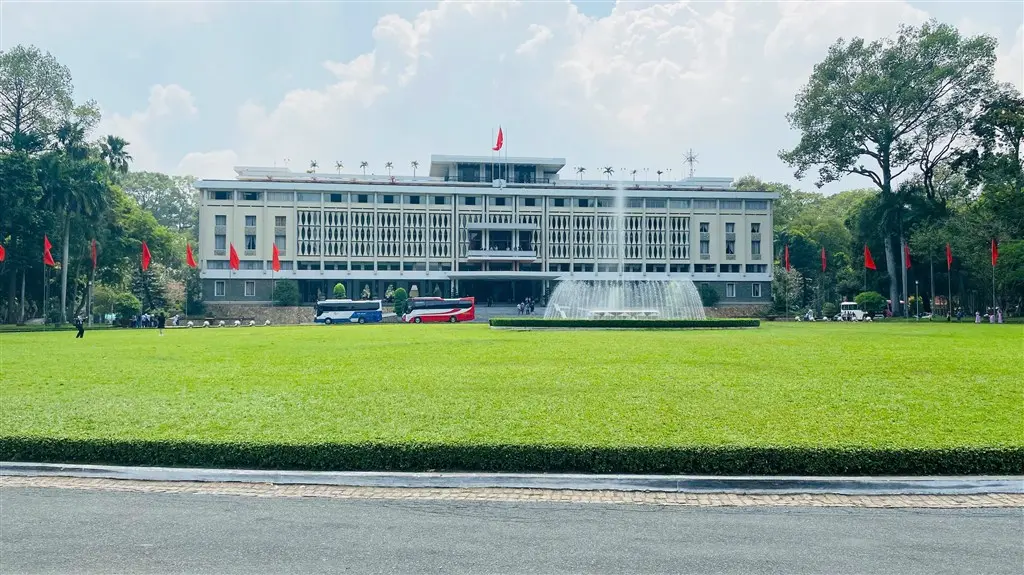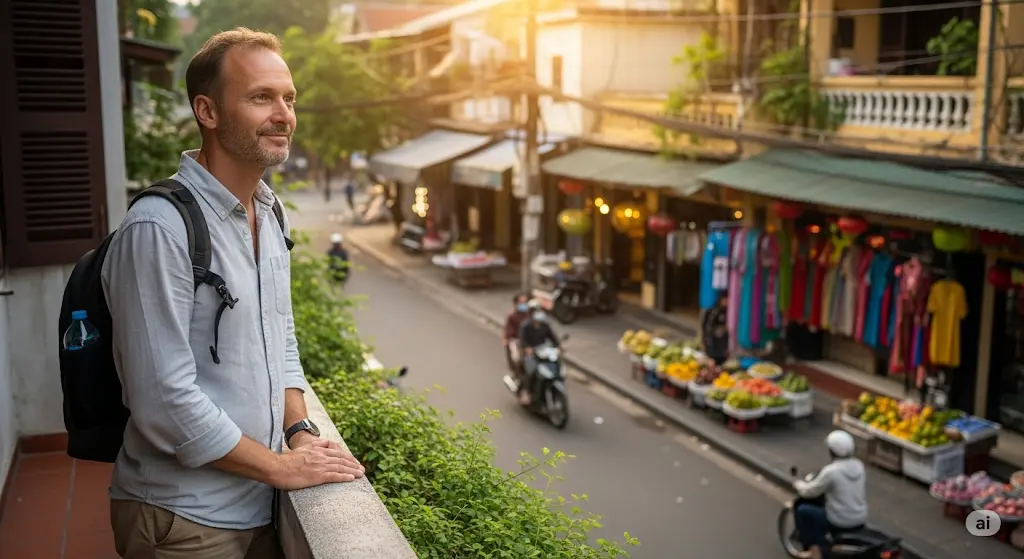Vietnamese holidays offer a profound window into the nation’s soul. These occasions are vibrant. They are deeply rooted in history and culture. EssentialVietNamtravel.com presents this guide. It helps you understand and experience the unique rhythm of Vietnamese celebrations. The yearly cycle of festivals in Vietnam shapes life.
It impacts everything from family gatherings to the national work schedule. Understanding these events Vietnam is key to appreciating Vietnamese culture. This article details major holidays in Vietnam. It explains their significance. It provides practical information for travelers and curious minds. We aim for you to grasp 90% of how to navigate and appreciate these special times.
Understanding the Heartbeat of Vietnamese Holidays
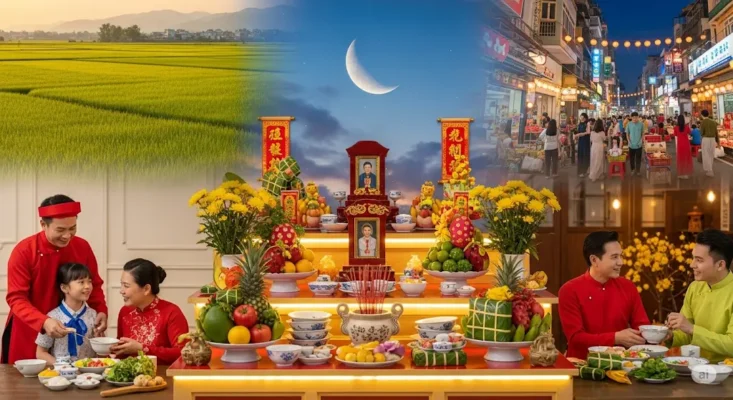
Vietnamese holidays are more than just days off work. They represent a complex tapestry of ancestral worship, community bonding, and national pride. Many significant vietnamese festivals follow the lunar-solar calendar. This calendar dictates the timing of events like Tet Nguyen Dan. The lunar calendar system is central to many traditional Vietnamese celebrations. This means dates shift each year compared to the Gregorian calendar.
These holidays are a cultural component vital to Vietnamese identity. They ensure the intergenerational tradition transfer of customs. They offer a blend of cultural influences, often ancient and deeply ritualistic. Family reunion is a recurring theme. Ancestor veneration rituals are common. Many holidays involve specific lucky foods and offerings-based practices.
These traditions are strong in both the Red River Delta and the Mekong Delta. The economic impact of holidays is also considerable. Businesses adjust. People travel. Markets become lively. Public Vietnamese holidays for employees mean official days off. This affects the routine of any workday or school day. For visitors, this can mean crowded transport or closed businesses, but also unique cultural immersion. A holiday in Vietnam is rarely an ordinary day; it’s a time when the nation pauses from business as usual.
These events are opportunities to witness unique Vietnamese traditions. They help in understanding the meaning of vietnamese holidays symbols. Each festival in Vietnamese culture has its own story. The national traditions are observed with great respect. From large public observances to intimate family gatherings, each celebration in Vietnam holds a special place. Learning about the Vietnamese holidays and traditions is learning about Vietnam itself. The country truly comes alive during these festive periods.
Tet Nguyen Dan: The Pinnacle of Vietnamese Celebration

Tet Nguyen Dan, often shortened to Tet, is the most important vietnamese holiday. It is the Vietnamese New Year, celebrated according to the lunar calendar. This vietnamese end of year celebration typically falls in late January or early February. Tet is a time of immense cultural and spiritual significance. It marks the arrival of spring. It symbolizes new beginnings. Families prepare for Tet weeks in advance. Homes are cleaned thoroughly. Debts are settled. New clothes are bought. This holiday is a prime example of traditional vietnamese holidays.
The celebration is multi-generational. Emphasis on family reunion is paramount. People travel across the country to be with their loved ones. This is a key part of vietnam holiday traditions. Ancestor worship is a central ritual during Tet. Altars are laden with offerings. These include food, fruits, and flowers. Families pray for good fortune in the coming year.
The atmosphere in cities like Hanoi and Ho Chi Minh City transforms. Streets are decorated with lights and flowers. The air buzzes with excitement. This festival in Vietnam is a true spectacle. Understanding Tet is crucial to understanding Vietnamese culture itself. The holiday embodies cultural identity preservation.
The Essence of Tet: Traditions and Customs
Tet involves many unique customs. One well-known tradition is “xong dat,” the first-footer. The first person to enter a home on New Year’s Day is believed to influence the family’s luck for the entire year. People carefully choose this person. Giving and receiving red envelopes, or “li xi,” is another cherished practice. These envelopes contain lucky money. They are given by adults to children, and sometimes to elders. The red color symbolizes good luck and prosperity. This is a common gift during Tet.
Decorations are very important. Peach blossoms (Hoa Dao) are prominent in northern Vietnam. They symbolize bravery and vitality. In southern Vietnam, apricot blossoms (Hoa Mai) are favored. Their yellow color represents wealth and nobility. Kumquat trees, laden with fruit, are also popular holiday decorations. They symbolize fertility and abundance.
Dragon dances and lion dances are common in public spaces. These performances are believed to ward off evil spirits and bring good luck. Each ritual has a purpose, often aimed at bringing good luck. New Year’s Eve Vietnam is marked by anticipation, family dinners, and often spectacular fireworks displays in major cities. Visiting pagodas is also a common holiday observance setting, alongside the home.
Tet Holiday Food: A Culinary Journey
Food plays a central role in Tet celebrations. Traditional vietnamese holidays food is rich and symbolic. The most iconic Tet food is Banh Chung. This is a square-shaped sticky rice cake. It is filled with mung beans and pork, then wrapped in dong leaves. Banh Chung is the main food of Tet. Its preparation is often a family affair. It symbolizes the earth, a token of gratitude to ancestors and nature. Another variant, Banh Tet, is a cylindrical cake popular in the south.
Other common dishes include gio lua (Vietnamese pork sausage), nem ran (fried spring rolls), and xoi gac (red sticky rice). Candied fruits and seeds, known as “mut,” are also essential snacks offered to guests. Each Vietnamese holiday food carries a symbolic meaning, reflecting wishes for health, happiness, and prosperity. These specific lucky foods are part of what makes the vietnam holiday so special. Sharing these meals is a vital part of family gatherings. The Vietnamese cuisine experienced during Tet is a highlight for many.
Navigating Tet as a Traveler
Traveling to Vietnam during Tet can be a unique experience. It offers a deep dive into Vietnamese culture. However, it requires careful planning. Important Considerations for Tet Travel:
- Book accommodations and transport far in advance. Many Vietnamese travel during this period. Availability can be scarce. Prices may increase.
- Many businesses, markets, and restaurants may close. This is especially true for the first few days of Tet. Plan your meals and activities accordingly.
- Major cities might feel quieter than usual. Many residents return to their hometowns. However, tourist areas often remain active.
- Embrace the festive spirit. Witnessing Tet traditions can be a highlight. If invited to a local home, consider it a great honor.
EssentialVietNamtravel.com advises checking the specific dates for Tet each year, as they vary. The public holiday schedule can extend for about a week. It is a time for national celebration, and a temporary shift from the usual work schedule.
Planning Your Tet Holiday Trip?
Don’t miss out! Flights and accommodations fill up fast during Tet. Secure the best deals by booking early.
Check both for the best availability and prices!
Hung Kings’ Commemoration Day: Honoring National Ancestors

Hung Kings’ Commemoration Day is a significant national holiday in Vietnam. It is typically observed on the 10th day of the third lunar month. This day serves to honor the Hung Kings. They are the legendary founders of the Vietnamese nation, Van Lang. This vietnamese festival is a powerful expression of ancestor worship on a national scale. It reinforces cultural identity and historical continuity. The main celebrations occur at the Hung Temple in Phu Tho province. This site is considered sacred.
Pilgrims flock to the temple from all over Vietnam. They offer incense and prayers. They participate in traditional ceremonies. These include processions with colorful palanquins and traditional music performances. The event is deeply ritualistic and commemorative. It underscores the importance of “Uong nuoc nho nguon” (When drinking water, remember the source), a core Vietnamese value.
This day is a public holiday. It allows people to reflect on their heritage. It is one of the traditional holidays in Vietnam that emphasizes the nation’s long history. This commemoration has a profound significance, reinforcing the national traditions of remembering and respecting forebears. It is a vital day in Vietnam for national unity.
Understanding the Significance
The Hung Kings are credited with establishing the first Vietnamese state. Their era, the Hong Bang dynasty, is a cornerstone of Vietnamese history and mythology. This day is not just about historical figures. It is about the collective ancestry of the Vietnamese people. It is a testament to the enduring strength of Vietnamese culture. The celebrations are a blend of solemn rituals and festive activities. It is a national commemorative date.
This holiday Vietnam offers a unique insight into how history shapes present-day identity. The emphasis on ancestor veneration rituals is clear. The event serves as an intergenerational tradition transfer. Young Vietnamese learn about their roots. The celebrations at the Hung Temple are a major cultural event Vietnam. EssentialVietNamtravel.com recommends that if your travel coincides, try to observe local customs respectfully. It’s a unique opportunity to witness a profound national tradition. This day highlights how deep traditional influence runs in modern Vietnam.
Reunification Day (April 30): A Nation United
Reunification Day, celebrated on April 30th, is a pivotal public holiday in Vietnam. This vietnam national holiday marks the day Saigon (now Ho Chi Minh City) fell in 1975. This event ended the Vietnam War. It led to the reunification of North and South Vietnam. The day is officially known as “Ngay Giai phong Mien Nam, thong nhat Dat nuoc” (Day of Liberation of the South and National Reunification). It is a day of great historical importance.
Public observances include flag hoisting ceremonies. There are parades in major cities like Ho Chi Minh City and Hanoi. Speeches by government officials commemorate the event. Many Vietnamese people take this opportunity to visit historical sites. They may also gather with family and friends. The date is fixed. It does not change with the lunar calendar. This holiday often leads into International Workers’ Day on May 1st. This creates a longer break for many people. This combination provides an opportunity for domestic travel.
Remembering the Past, Looking Forward
Reunification Day evokes a range of emotions. For some, it is a celebration of national unity and independence. For others, it brings memories of a difficult period. Official narratives focus on peace and national development since 1975. The day serves as a reminder of the country’s resilience. It highlights the progress made in subsequent decades.
As a traveler, you will notice patriotic displays. Banners and national flags are common. Some government offices and businesses may close. Tourist attractions generally remain open. It is a significant day in Vietnam. Understanding its context helps appreciate modern Vietnam. EssentialVietNamtravel.com notes that this holiday vietnam, along with the subsequent May Day, can make popular tourist destinations busier. This is a day off work for most, allowing for extended holiday travel. It’s a key date in the public holiday schedule.
National Day (September 2): Celebrating Independence
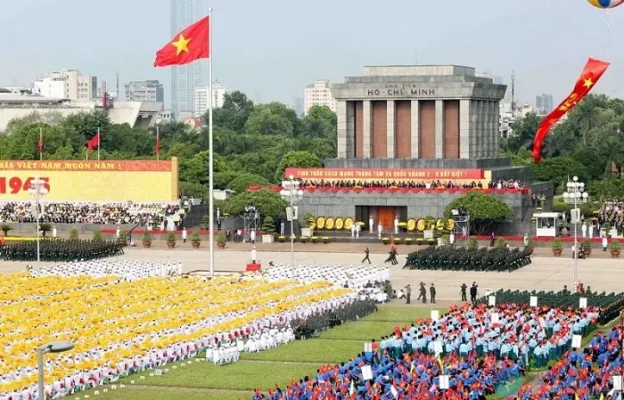
Vietnam National Day is celebrated on September 2nd each year. This national holiday of vietnam commemorates a crucial moment in Vietnamese history. On this day in 1945, President Ho Chi Minh read the Declaration of Independence at Ba Dinh Square in Hanoi. This declaration proclaimed Vietnam’s independence from French colonial rule. It established the Democratic Republic of Vietnam. This event is a cornerstone of modern Vietnamese identity.
Celebrations for Vietnam National Day are typically grand. Major cities like Hanoi and Ho Chi Minh City host parades. There are often fireworks displays in the evening. Streets are adorned with national flags, banners, and images of Ho Chi Minh. People gather in public squares. There is a palpable sense of national pride. This is a public holiday. Most people have the day off work. This allows for family gatherings and public participation in events Vietnam.
The Spirit of Independence
National Day is a time for Vietnamese people to reflect on their journey to sovereignty. It celebrates the nation’s resilience and spirit. The atmosphere is festive and patriotic. Schools and communities often organize cultural performances and events. This day is an important part of Vietnam traditional holidays, even though it marks a modern historical event. It reinforces national unity and pride in the country’s achievements.
For visitors, National Day offers a chance to witness vibrant public celebrations. Expect large crowds in city centers, especially near iconic landmarks. EssentialVietNamtravel.com suggests planning your day if you wish to observe the official events. Be aware of potential road closures or traffic diversions in areas where parades are held. It is a significant cultural event Vietnam, showcasing the nation’s patriotic fervor. Understanding this day allows one to better grasp Vietnamese history and the value placed on independence.
Mid-Autumn Festival (Tet Trung Thu): A Joyful Celebration, Especially for Children
The Mid-Autumn Festival, known as Tet Trung Thu, is a beloved vietnamese festival. It is celebrated on the 15th day of the eighth lunar month. This usually falls in September or October. While not always a public holiday nationwide with a mandatory day off work for all, it is a very popular and widely celebrated event. Originally a harvest festival, Tet Trung Thu has evolved into a joyful occasion primarily for children. It is sometimes called the “Children’s Festival.”
The festival is characterized by several charming traditions. Lanterns are a key symbol. Children parade through the streets at night carrying colorful lanterns of various shapes and sizes. These shapes often include stars, carps, and rabbits. Lion dances, or “mua lan,” are performed to bring good luck and chase away evil spirits. The sound of drums accompanying the lion dances fills the air. This key activity, the lantern parade, is a highlight. The festival also has a strong emphasis on family gatherings.
Mooncakes and Legends
A special food associated with the Mid-Autumn Festival is the mooncake (Banh Trung Thu). These are round or square pastries. They are typically filled with lotus seed paste, mung bean paste, and sometimes salted egg yolks. The yolks symbolize the full moon. Sharing mooncakes among family members is an important ritual. The special food, mooncake, is a delicious part of the festival. This is a time when families come together, look at the full moon, and enjoy these treats.
The festival is rich in folklore. One popular legend is that of Chu Cuoi, the Man in the Moon, and the Jade Rabbit. These stories are often told to children during the festival. While it is a significant cultural event Vietnam, the impact on the work schedule may vary. Some regions or companies might offer time off, but it’s not a guaranteed national public holiday like Tet or National Day. EssentialVietNamtravel.com recommends experiencing this festival if you are in Vietnam at the time. The vibrant atmosphere and cultural displays are truly memorable. It’s a wonderful example of a festival in Vietnam focused on joy and community. It’s a beautiful part of Vietnamese celebrations.
Other Notable Vietnamese Celebrations and the Yearly Cycle
Beyond the major public holidays, Vietnam hosts numerous other festivals and events throughout the yearly cycle. Many of these are regional or specific to certain communities. Some might be considered a food festival in Vietnam if they highlight local cuisine. These vietnam events contribute to the rich tapestry of Vietnamese culture. Examples include temple festivals, craft village celebrations, and ethnic minority events. These often involve unique rituals, traditional music, and local specialties. Understanding this rhythm of celebrations helps in appreciating the diversity within Vietnamese traditions.
The Vietnamese calendar is punctuated by these events. While not all result in a day off work or a national holiday, they are important cultural markers. They reflect the agricultural cycles, historical commemorations, and spiritual beliefs of the people. For instance, the Cold Food Festival (Tet Han Thuc) in the third lunar month involves eating cold glutinous rice balls. Buddha’s Birthday is widely observed with ceremonies at pagodas. These festivals in Vietnam showcase the blend of different influences. Learning about what holidays do vietnam celebrate beyond the main ones can offer deeper insights.
Impact on Daily Life and Travel
These various vietnamese celebrations, whether large or small, influence daily life. Even minor festivals can see increased activity at local temples or community spaces. For travelers, this means there is almost always something interesting happening somewhere in Vietnam. It is wise to find holiday dates if you wish to experience a specific local festival. You can understand holiday meanings better by observing them firsthand.
EssentialVietNamtravel.com suggests researching local events in the regions you plan to visit. This can lead to unique and authentic cultural experiences. Keep in mind that some local festivals might cause temporary disruptions or crowds. Planning travel around holidays, even smaller ones, can enrich your journey. Discover holiday traditions by being open to these local festivities. The need for celebratory leave is acknowledged for major public holidays, but cultural participation happens year-round.
Practical Guide for Experiencing Vietnamese Holidays
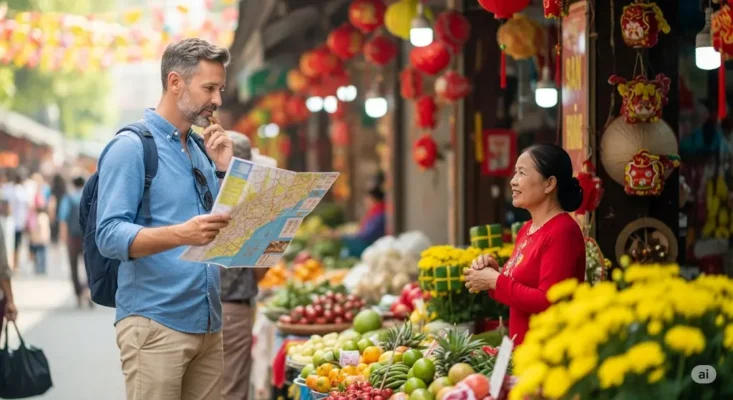
To truly enjoy vietnamese holidays, some planning and cultural awareness are beneficial. These periods offer a unique chance to see Vietnam at its most vibrant. However, they can also present challenges for unprepared travelers. This guide helps you make the most of these special times. EssentialVietNamtravel.com wants you to have a smooth and enriching experience. Knowing how to celebrate vietnamese holidays respectfully is key.
Public vietnamese holidays for employees mean that many locals are also traveling or celebrating. This affects transportation, accommodation, and the general atmosphere. The public holiday schedule often creates long weekends. This leads to an increase in domestic tourism. Understanding the work cessation patterns is important. For example, during Tet Holiday, many shops and services close for several days. This is different from a regular workday.
Finding Holiday Dates and Planning Your Trip
The first step is to find holiday dates. Vietnamese holidays based on the lunar-solar calendar change each year in relation to the Gregorian calendar. For example, vietnamese holidays 2024 will have specific dates for Tet and Mid-Autumn Festival. EssentialVietNamtravel.com recommends checking a reliable current year calendar for Vietnam. Tips for Planning:
- Book flights and hotels well in advance, especially for major holidays like Tet or the Reunification Day/May Day break.
- Confirm opening hours for attractions, restaurants, and shops.
- Be prepared for higher prices for some services during peak holiday travel.
- Consider secondary destinations if you prefer to avoid the biggest crowds in major cities.
- If you want to experience a specific holiday, plan your travel to Vietnam around it.
Cultural Etiquette During Holidays
Respectful behavior is always appreciated. During holidays, it is even more important.
- Dress modestly if visiting temples, pagodas, or attending formal ceremonies. This is a common holiday observance setting.
- Ask for permission before taking photos of people or private rituals.
- If invited to a home, a small gift is thoughtful. This could be fruit, tea, or flowers. During Tet, avoid giving gifts that are black or white, or sharp objects.
- Be patient and understanding. Crowds and delays can occur.
- Learn a few basic Vietnamese phrases. “Chuc Mung Nam Moi” (Happy New Year) is essential for Tet.
Understanding the meaning of vietnamese holidays symbols can also guide your interactions. For example, knowing the significance of apricot blossoms or peach blossoms during Tet shows cultural awareness.
Embracing the Festive Spirit
Vietnamese holidays are a time of joy and community. Embrace the atmosphere. Try the traditional vietnamese holidays food. Observe the customs. If you have the opportunity to participate in a family gathering or a public observance, do so with an open mind. These experiences offer unparalleled insight into Vietnamese culture and Vietnamese history. Many holiday rituals are performed with the purpose of bringing good luck.
EssentialVietNamtravel.com believes that by being informed and respectful, any visitor can have a wonderful time experiencing the unique charm of a holiday in Vietnam. It’s a chance to see beyond the routine and witness the heart of traditional Vietnamese celebrations. Whether it’s a national holiday of vietnam or a smaller local festival vietnam, each offers a unique window. Events Vietnam are truly special.
Further Reading on Vietnamese Culture
Conclusion: The Enduring Richness of Vietnamese Holidays
Vietnamese holidays are a vital expression of the country’s cultural identity. They showcase a rich tapestry of history, tradition, and community spirit. From the nationwide excitement of Tet Nguyen Dan to the solemn remembrance of Hung Kings’ Commemoration Day, each festival in Vietnam offers a unique experience. Understanding these Vietnamese celebrations provides deep insight into the values and lifestyle of the Vietnamese people. The emphasis on family reunion, ancestor veneration rituals, and specific lucky foods are common threads. The lunar calendar system continues to shape many of these festive occasions.
EssentialVietNamtravel.com encourages travelers and cultural enthusiasts to explore these holidays. Plan thoughtfully. Engage respectfully. Discover the profound beauty and meaning embedded in each vietnamese holiday. Whether you witness the dragon dances during Tet, the lantern parades of the Mid-Autumn Festival, or the patriotic displays on National Day, you will gain a deeper appreciation for Vietnam. These traditional events Vietnam are more than just days off; they are the heartbeat of a nation, preserving cultural heritage for future generations. We hope this guide helps you understand and enjoy the vibrant world of holidays in Vietnam.

